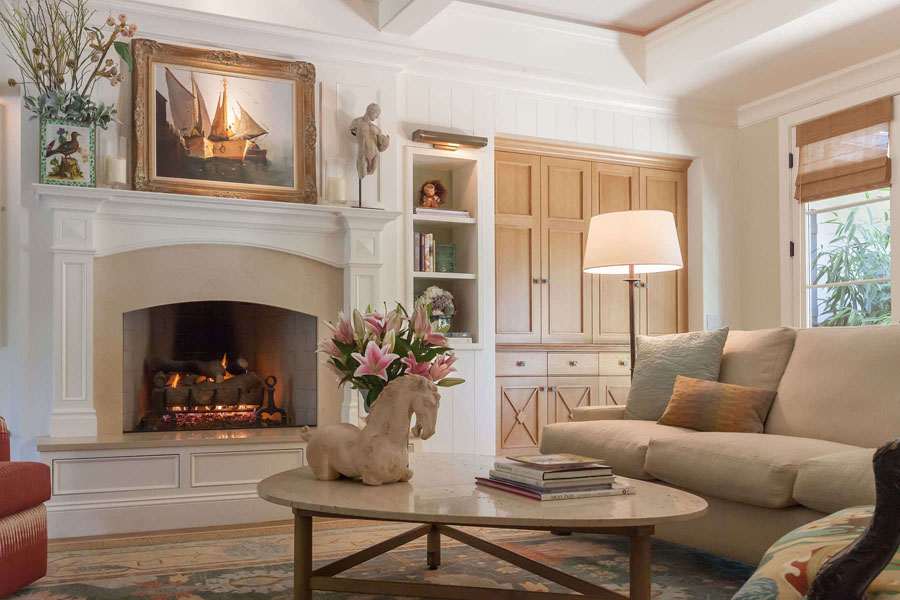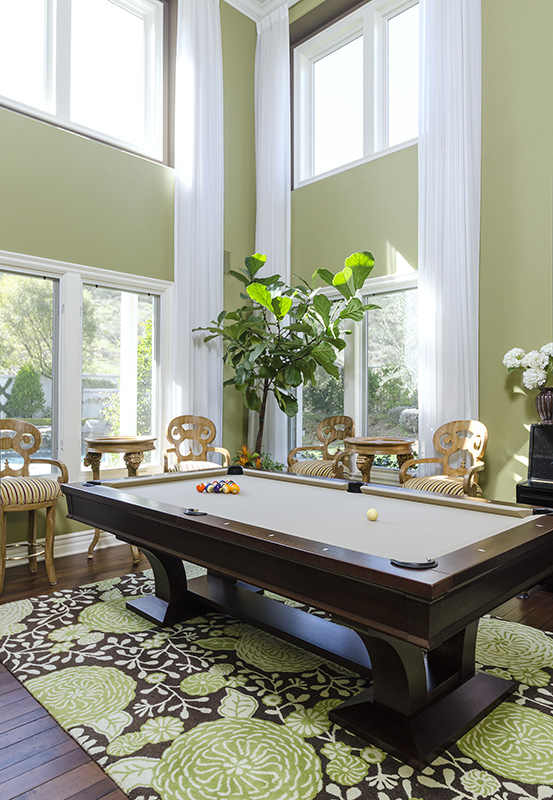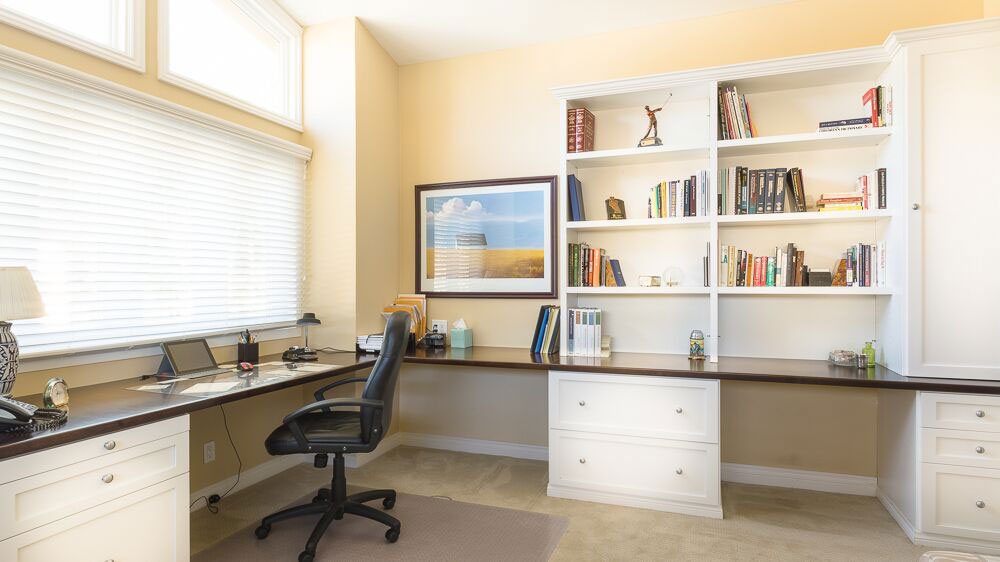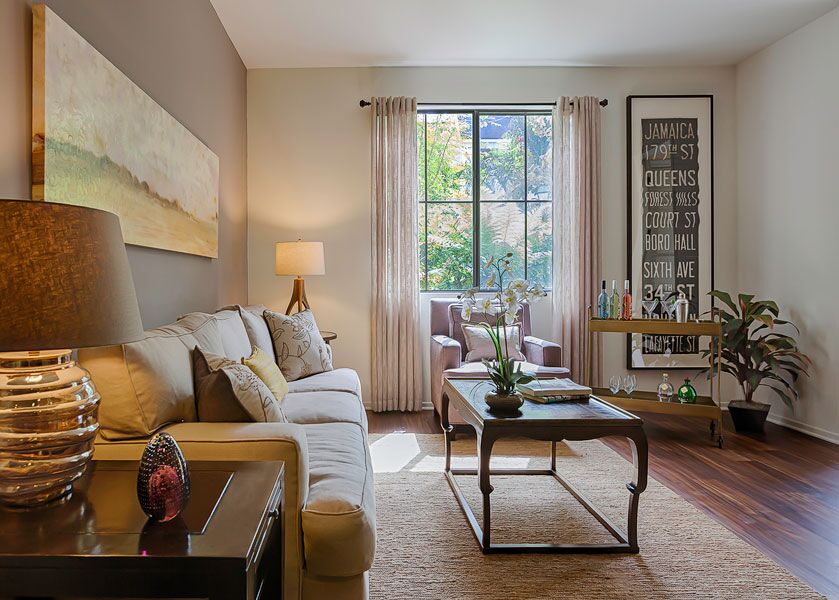If you feel like modern is too sleek and traditional is too formal, your style-in-the-middle may be “transitional.” Transitional design is a marriage of traditional and modern furnishings, surfaces, and materials. The result is a blending of the elegance and classic design elements and the clean profiles and understated colors of the contemporary style.
With it’s focus on light and warmth, transitional style joins the best of both worlds and fits right in with our Southern California lifestyle.

Tone-on-Tone Color Scheme

Color palettes are very subtle, with an emphasis on warm neutrals including shades of ivory, taupe, gray and tan. A hint of deep brown like chocolate or espresso can be thrown in to ground the palette. This creates a scheme that is as relaxing and uncomplicated as a California Sunday afternoon.
If you just love a splash of color, keep it to a few strategic accents in each space.
Simple Silhouettes

The furnishings in transitional rooms have clean, crisp profiles and straightforward style — no flourishes here. Gentle curves and rigid lines play off each other to create energy and balance.
You don’t have to leave older furniture styles by the wayside, but integrate updated versions. Keep the scale large enough to feel inviting and the seating cushioned and comfy – an invitation to flop down and settle in.
Because of their simple design, Asian, Shaker and Mission-style furnishings are often a nice match in a transitional space. A lack of ornamentation and decoration keeps the focus on simplicity and sophistication.
Textural Interest
When you can’t rely on color to punch up a transitional space, the use of texture rises to this challenge. Woven fabrics, natural fibers and a blend of both matte and glossy finishes lend a sense of layering and liven the visual experience.
Think leather, sisal, burlap, chenille, rattan and more — any material with tactile appeal will fit right in. Don’t go overboard, though, or you’ll lose the simplicity that’s so essential to transitional style.
Minimal Accents
Pare down your accessories wisely and you won’t need many of them to add interest to your room. As with furnishings, transitional accents share a lack of decorative elements and have a certain purity of form and line. Artwork should be simply framed and lighting should have clean lines. Tasteful signature pieces are displayed without much fanfare.
The less-is-more approach requires editing down what you have. This might be a great opportunity to get some help from a friend who has an objective viewpoint and a good eye for style.
Crisp Window Treatments

You want your transitional room to radiate with light and warmth. If you bring in balloon valances, billowing draperies or elaborate finials, your transitional room will instantly feel overdressed. Yet bare windows may cast a chill over the space. Treat windows elegantly but simply: basic panels, bamboo blinds, shutters, neutral Roman Shades or woven shades with layered neutral drapes.
Serenity

Above all, a transitional space should feel peaceful. You’re going for an air of rest and ease. As you layer in the floor and window coverings, furnishings, and accessories, each should add to this feeling. If you sense an inharmonious note, take a critical look to see what needs editing or smoothing. Each piece should fit into a unified whole.
Whether transitional is your favorite design style or you just want to try it in a room makeover, you’ll find that transitional design blends the comfort and warmth of traditional design with the clean lines and neutral colors of the contemporary look. The result? Gracious, simplified spaces that radiate harmony and comfort.

